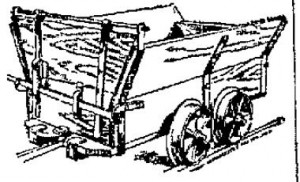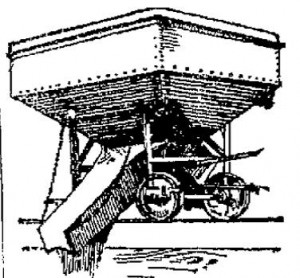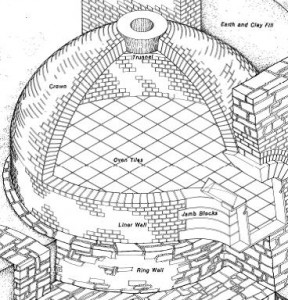By the end of the 1860s the great coal and coke bonanza, similar in scope to the California Gold Rush, had begun in the United States. It was a speculative venture throughout Pennsylvania. Anyone who had coal on their land or could purchase land with coal in it tried to get into the business of mining and coking coal, the fuel of the Industrial Revolution.
Henry Clay Frick was one of those speculators. He built his first coal mine and coke ovens at Broad Ford: the Frick Mine followed by the Henry Clay. Then he bought a mine he renamed the Adelaide. Over the next decade he bought more mines that he built, most of them along the Mount Pleasant Broadford Railroad which was another of his investments. That track began in Broad Ford and ended at Bridgeport. The Bridgeport mines of Buckeye, Star, Hazlett, and Mullin were among those early mines. They were not built by Frick, but by 1895 he owned them too.
Expanded Research- CLICK HERE!
BUCKEYE MINE
- 1873 Built by Cochran & Ewing, Co.
- Erected on Shupe Run and Jacobs Creek and serviced by the Mount Pleasant branch of the Baltimore and Ohio Railroad.
- 1875 60 beehives bank ovens each 10.5’x5’, fueled by 100 bushels of coal which filled 38 railroad cars weekly.
- 1878 Only 44 men employed.
- 1882 Along with the Star Mine nearby employed 110 men and had 136 beehive coke ovens.
- 1885 Only 47 employees were working.
- 1886 Ownership became the A. C. Cochran Coal & Coke Company employing 48 miners and 54 coke workers, with 122 beehive coke ovens.
- July 1, 1890 control went to the McClure Coke Co. (had 11 mines in the region, see map at bottom to view McClure holdings in 1886).
- 1890 Pennsylvania inspectors found ventilation very poor.
- 1895 Sold to H.C. Frick Coke Co. who employed 248 men and boys with 160 beehive ovens. (Perhaps leased to McClure till 1900.)
- 1905 Ovens increased in number to 306.
- 1910 Larry car tracks to move the coal to the coke ovens now linked Buckeye to Star and Hazlett.
- 1915 Operated by Frick with 125 men working.
- 1917 Frick ceased operations at Buckeye.
- 1918 Reopened because of World War I. 300 coke ovens in operation including furnace ovens for steel.
- Still on Connellsville Courier Report of the Operation and Output of the Coke Ovens of the Connellsville Region through 1920.
- 2001 Western Pennsylvania Coalition for Abandoned Mine Reclamation studied the Buckeye Gob pile (slag dump) and determined it could have reuse as a recreational facility.
Type of Entrance: 1 drift, 1 slope Number of Ovens: 136-306.
Current: closed, flooded; 1 patch house. GOB (slag) pile and some ovens extant and visible along Coal & Coke Trail.
STAR MINE
- 1871 Built by B. F. Coughanour.
- Erected on Shupe’s Run and serviced by the Mount Pleasant branch of the Baltimore and Ohio Railroad.
- 1875 All miners along the Mount Pleasant Broadford Railroad were paid 20 cents a wagonload.
- 1876 Local mine owners met to try to form a syndicate.
 1878 Abandoned.
1878 Abandoned.- 1882 Possibly joined to Buckeye and definitely sold to Cochran & Ewing.
- 1885-7 Major unrest in the coal fields over salaries and working conditions. Foreigners, first imported in the 1870s (not as strikebreakers), were blamed.
- 1886 Ownership became the A. C. Cochran Coal & Coke Company.
- 1887 Pinkerton Detectives and Philadelphia and Chicago Coal and Iron Police brought into region because of unrest.
- 1890s Sold to McClure Coke Co.
- 1895 Sold to H.C. Frick Coke Co. (perhaps leased to McClure till 1900).
- Appears to have never been on the Connellsville Courier Report of the Operation and Output of the Coke Ovens of the Connellsville Region.
- 1930s Owned by John Weinman. (sold coke to US Steel).
Type of Entrance: drift, to the left of Weinman Rd. Number of Ovens: 16 (Ovens buried but visible).
Current: Closed. Privately owned. One patch house still stands but abandoned because it is flooded.
Caption: The illustration is from John Aubrey Enman, The Relationship of Coal Mining and Coke Making to the Distribution of Population Agglomerations in the Connellsville (Pennsylvania) Beehive Coke Region, Unpublished Ph.D. dissertation, Pittsburgh, PA: University of Pittsburgh Library, 1963, p. 142. Note no Star mine.
HAZLETT MINES (1&2)
- 1872 John Myers built a mine, 150 coke ovens, and company store on the west side of Shupe Run at Hazlett at a cost of $100,000.
- They were the first coke ovens in Westmoreland County.
- 1873 Boyle & Hazlett Coal Co. built a mine on the east side of the railroad.
- 1875 Boyle & Hazlett Coal Co. purchased the Myers Mine at sheriff’s sale for $33,050. Contains 100 ovens, 20 shanties, engine, and cars.
- 1876 Largest mine at Bridgeport with 171 beehive coke ovens and 125 workers who filled 20 rail cars a day.
- 1876 Mount Pleasant Dawn reported, “All the miners in this section of ‘cokedom’ who were out on a strike last week have gone to work at 25 cents per wagon, the price paid before the strike. Messrs Boyle & Hazlett compelled their men to dig four wagons free to recompense them for the
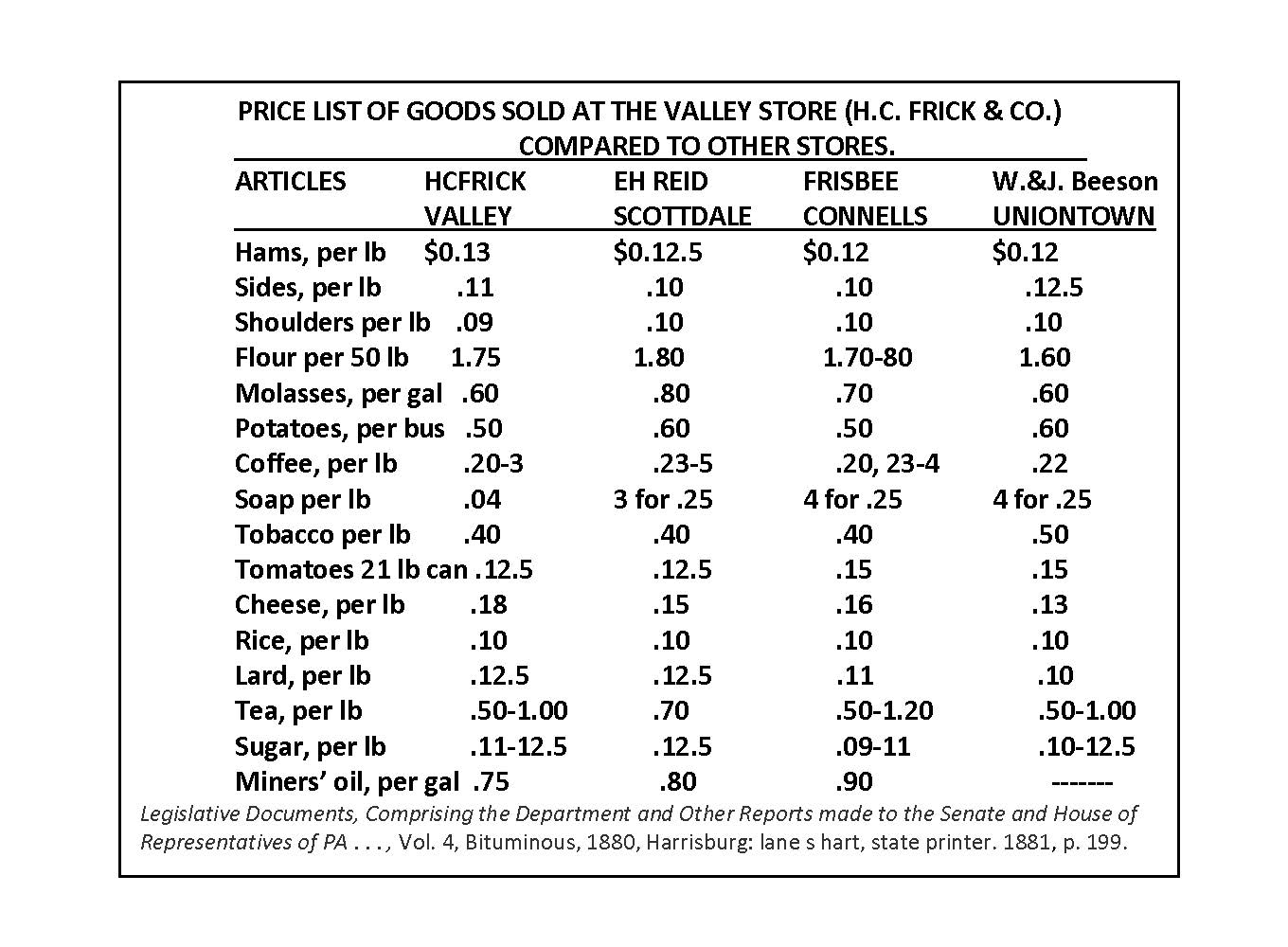 expense incurred by the strike.”
expense incurred by the strike.” - 1878 Mine has too much carbonic acid gas (black damp) which can explode. Only 35 men working in the mine and 34 worked in the coke yards.
- 1879 Boom year in coal. Owner built 100 more coke ovens.
- 1880 Owner sued for failing to deliver 11 railroad cars of coke a day to the Missouri Furnace Company of St. Louis.
- 1881 Boyle bought out Hazlett for $75,000.
- 1882 Became Boyle & Rafferty Coal Co. employed 220 men with 261 beehive coke ovens.
- 1882 Began making 24-hour coke and shipping to the Lucy (Carnegie Steel, Duquesne), Eliza (Jones and Laughlin), and the Isabella (Etna) furnaces as well as points west of Pittsburgh.
- 1885 Rafferty & Donnelly Coal & Coke Co. bought half interest. Only 84 people employed.
- 1885 Rafferty introduced a huge wagon with no increase in pay per load. Miners refused. Wagon replaced.
- 1885 Rafferty & Donnelly became McClure & Co.
- 1890 Still had 261 beehive coke ovens.
- 1890 Pennsylvania inspectors found ventilation and drainage unsatisfactory.
- 1895 H.C. Frick Coke Co. bought and leased to McClure until 1900-03.
- 1896 Hazlett shaft turned into a pumping station.
- 1897-99 Off the Connellsville Courier Report of the Operation and Output of the Coke Ovens of the Connellsville Region list.
- 1900 Back on the Courier list for McClure with 150 ovens, but by end of year operated by H. C. Frick.
- 1900 Frick could not rebuild the 261 ovens because of structural problems so only 150 ovens were rebuilt and working.
- 1905, 1910 Off the Connellsville Courier Report of the Operation and Output of the Coke Ovens of the Connellsville Region
- 1936 Abandoned by Frick.
- 1936 Mount Pleasant borough sought to use the mine for sewage disposal. Because of interconnection of area mines and fear of fires, they built a Sewage disposal plant in the area instead.
- 1930s Went through a few new owners including John Weinman who bought it in the 1930s The Weinman family still owned part of the property in 2015.
Type of Entrance: 2 shafts, 1 slope. Ovens: 171-261.
Current Private property. A few coke ovens (some given to Mount Pleasant borough), others deteriorating. Mine entrance on property: flooded and forming a small contaminated lake. No evidence that current oven ruins are the original ovens. Needs investigation.
Caption: Thomas Lynch, H. C. Frick Coke Company superintendent answered critics of his company stores overpricing products by providing a comparison of the company store at the Valley works in Morgan Valley to other local stores. “Changes in Coke Firm,” The Keystone Courier, February 4, 1881, p. 1.
MULLIN MINE
(sometimes spelled Mullen)
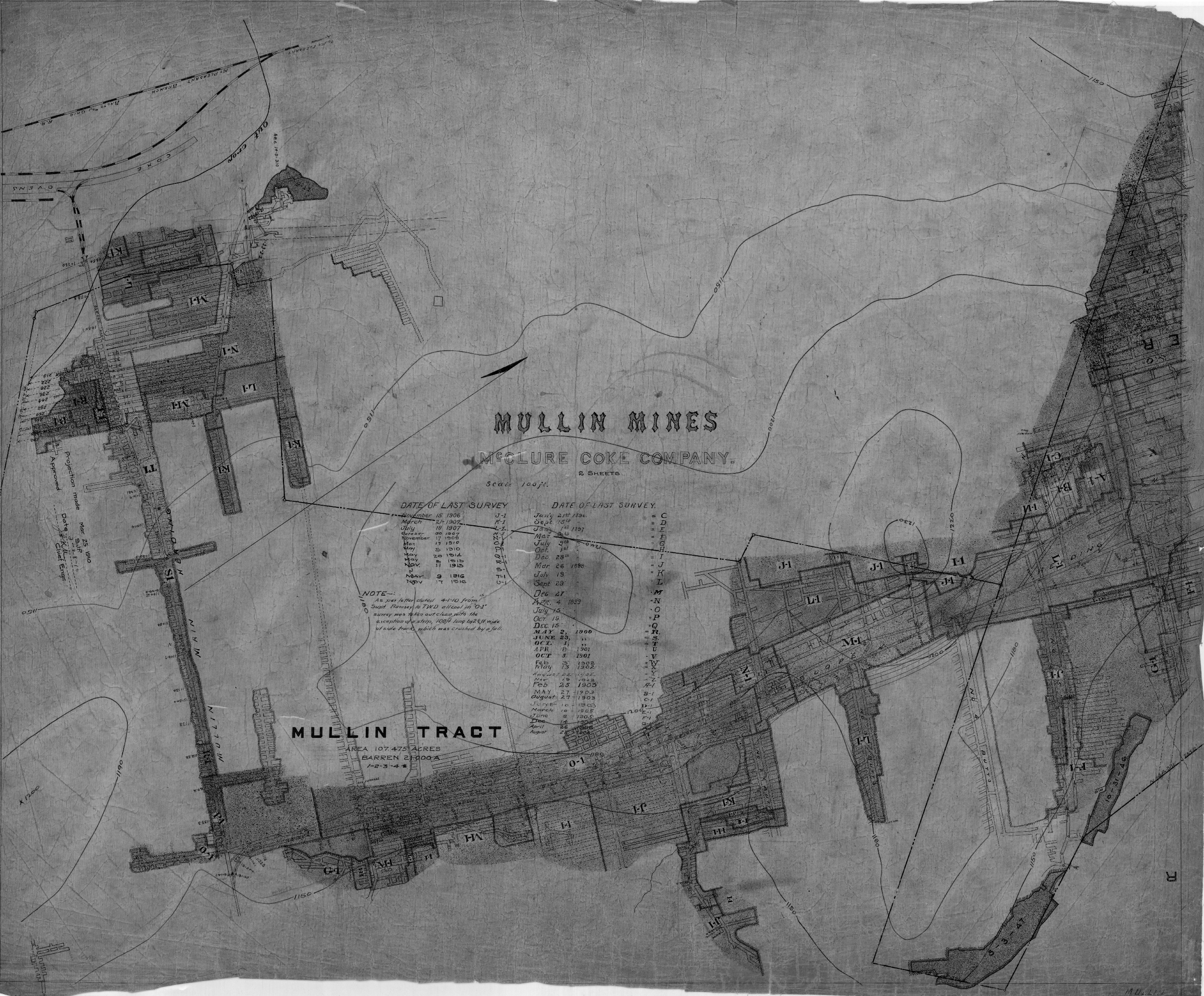 Built pre-1876 William D. Mullin Co. 40-60 ovens, 20-60 men.
Built pre-1876 William D. Mullin Co. 40-60 ovens, 20-60 men.- Erected on Shupe Run and serviced by the Mount Pleasant branch of the Baltimore and Ohio Railroad.
- 1882 Began shipping to the Lucy (Carnegie Steel, Duquesne), Eliza (Jones and Laughlin), and the Isabella (Etna) furnaces as well as points west of Pittsburgh.
- 1883 Ownership name changed to Mullin, Strickler and Co.
- 1883 Fire in the underground stables where horses were kept killed 4 horses and 1 mule. It burned all the harness and 100 bushels of corn. Had to borrow animals from nearby Standard Mine to keep working.
- 1884 Only 20 men employed. Mine found in good condition by state inspectors.
- 1885 Owner bought machines to replacing mules and horses which had been used to haul coal to the surface.
- 1890 Pennsylvania mine inspectors found this mine in best condition of the Bridgeport mines.
- 1891 Ownership changed to McClure Coke Co. 82 ovens.
- 1895 Purchased by H.C. Frick Coke Co., leased to McClure until 1900.
- 1896 Cut into the Hazlett Mine in order to help with drainage of water thus eliminating the need for pumps and steam pipes.
- 1901 Frick began operating the mine and the 82 beehive coke ovens.
- 1909 Number of operating coke ovens fell to 40.
- 1909-10 Mine flooded and sealed in order to stop fires by cutting off air supply.
- 1910 Off the Connellsville Courier Report of the Operation and Output of the Coke Ovens of the Connellsville Region list.
- 1911 Fire broke out again at Mullin when a 200 foot long cave-in occurred injecting air into the flooded and sealed mine. Dense smoke visible.
- 1990 Mine on fire sporadically since the late 1880s.
Type of Entrance: drift, slope. Number of Ovens: 82
Current: Strip mined and closed. A few buildings extant and reused.
Caption: Underground view of the Mullin Mine (misspelled Mullen). BOM Maps. Courtesy of the Pennsylvania Bureau of Mines, California, PA.
OTHER MINES
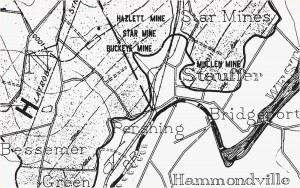 Names which appear occasionally but are not on any official list of local mines are the Bridgeport Mine and the Boyle Mine. Both are probably alternate names for those listed above. Others were absorbed into the mines above. The Stauffer Mine was a legitimate small operation at Bridgeport which had only 12 (one source says 20) beehive ovens and was worked by 12 men. It probably opened sometime in the early 1870s, was owned and operated by the J. F. Stauffer & Co. (which owned the Dexter and the Home mines) and never appeared on the Connellsville Courier Report of the Operation and Output of the Coke Ovens of the Connellsville Region list. It was located along Jacobs Creek at the junction with Shupe Run. Local former mine owners at Bridgeport have no recollection of this mine but most written sources seem to suggest that Stauffer Mine and Star Mine were one in the same.
Names which appear occasionally but are not on any official list of local mines are the Bridgeport Mine and the Boyle Mine. Both are probably alternate names for those listed above. Others were absorbed into the mines above. The Stauffer Mine was a legitimate small operation at Bridgeport which had only 12 (one source says 20) beehive ovens and was worked by 12 men. It probably opened sometime in the early 1870s, was owned and operated by the J. F. Stauffer & Co. (which owned the Dexter and the Home mines) and never appeared on the Connellsville Courier Report of the Operation and Output of the Coke Ovens of the Connellsville Region list. It was located along Jacobs Creek at the junction with Shupe Run. Local former mine owners at Bridgeport have no recollection of this mine but most written sources seem to suggest that Stauffer Mine and Star Mine were one in the same.
As early as 1889 the Reports of the Inspector of Mines included Weinman Nos 1 & 2 Mines in the Bridgeport area. The Weinman family still owns land where the Star Mine once stood and were involved in mining in the area well into the 20th century. There is not enough evidence at the current time to identify the origin or the location of the Weinman mines.
The final surprise along the Mount Pleasant Broadford Railroad is the Duncan Mine. Located at the end of the line one mile north of Bridgeport (see railroad illustration below), it existed as early as 1871, had a slope entrance, and 25 ovens worked by 20 men. The ovens were beehives coke ovens measuring 11.5’ x 5.5’ and produced 8,125 bushels a week. In 1877 the Duncan Mine was flooded and out of commission. It would never reopen.
Caption: Section of WPA Connellsville sheet 6, map of region mines.
THE CLEAN UP
- 1927 Goehring bill to seal all abandoned mines passes in the state.
- 1930 During the 1930s Depression the state employed out-of-work miners to work in various projects. Among them the Civil Works Administration (CWA) in 1935 followed by the Works Progress Administration (WPA) in 1937 began sealing all entrances to abandoned mines. Artists and writers made maps and wrote histories.
- 1936 State began sealing drift and shaft mines in Westmoreland County. Hired 199 unemployed miners for the job through the WPA.
- 1937 On August 30, 1937, The Daily Courier of Connellsville reported there were 3,464 abandoned mines in Western Pennsylvania, 1,003 idle mines, 2,130 working mines and all had acid mine drainage. To this point the WPA had sealed 400 openings in the area and filled 60,000 cave-ins. The estimate for completion of the job was ten years.
- 1949 The state began sealing abandoned mines along Jacobs Creek.
- Billions of dollars have been spent but the challenge remains.
BRADDOCK ROAD
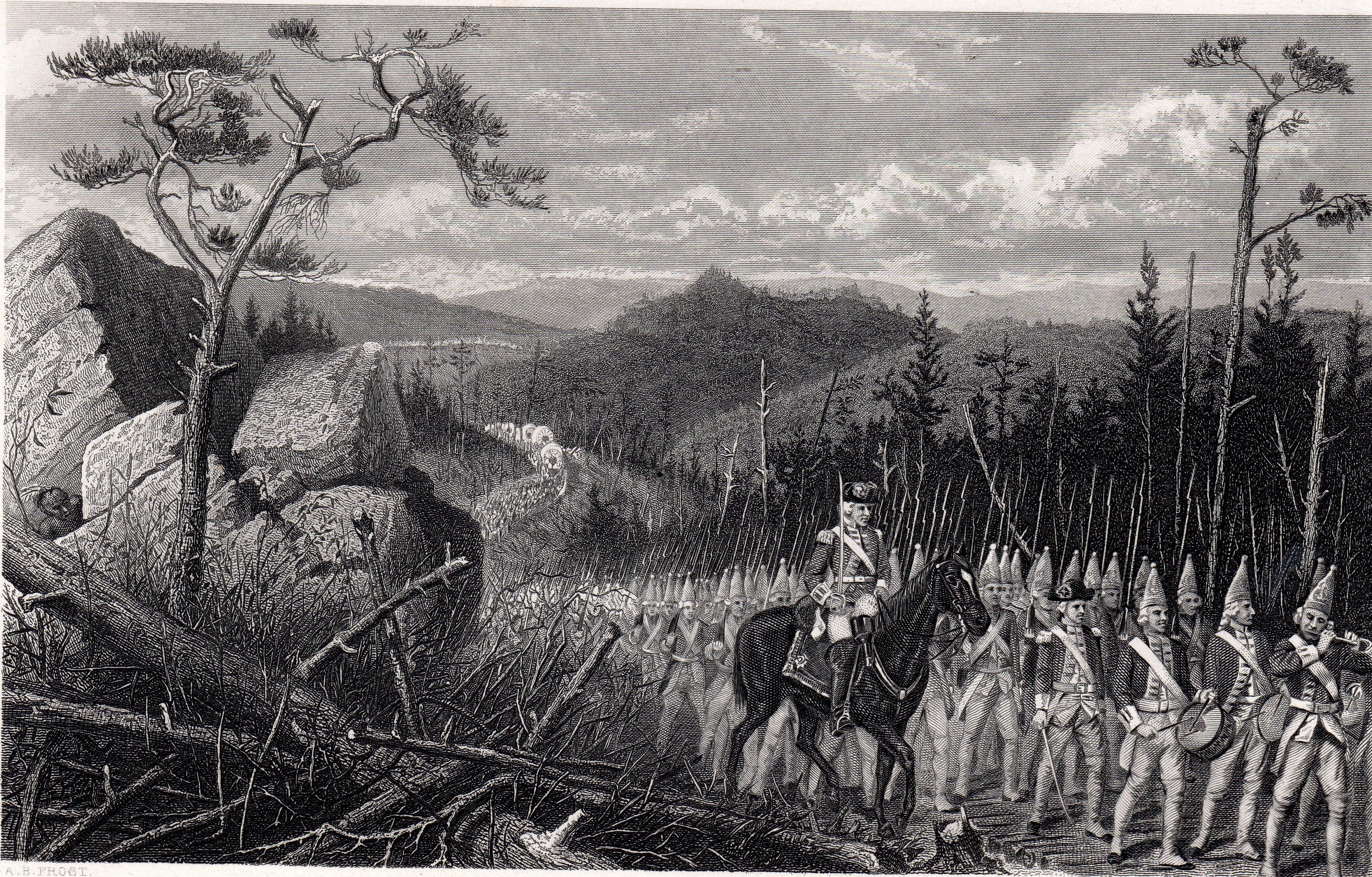 In 1755 British General Edwin Braddock marched his army north from Maryland to the forks of the Ohio River at what was then Fort DuQuesne. In our region he traveled north from Greenlick Lake, passed through a swamp and crossed Jacobs Creek to continue up what we now call Weinman Road. Near the end of Weinman Road the army cut northwest up through the fields toward Route 819 and on into and through what would become Mount Pleasant. Although not the only theory as to the actual road from Connellsville to Mount Pleasant, many local historians believe Braddock and his army came up what we now call Morgan Valley just as the Mount Pleasant Broadford Railroad would do over a century later. For a tour of Braddock Road from Greenlick Lake through Mount Pleasant and on to the Industrial Park go to: http://mphistory.com/default.aspx?pageid=12
In 1755 British General Edwin Braddock marched his army north from Maryland to the forks of the Ohio River at what was then Fort DuQuesne. In our region he traveled north from Greenlick Lake, passed through a swamp and crossed Jacobs Creek to continue up what we now call Weinman Road. Near the end of Weinman Road the army cut northwest up through the fields toward Route 819 and on into and through what would become Mount Pleasant. Although not the only theory as to the actual road from Connellsville to Mount Pleasant, many local historians believe Braddock and his army came up what we now call Morgan Valley just as the Mount Pleasant Broadford Railroad would do over a century later. For a tour of Braddock Road from Greenlick Lake through Mount Pleasant and on to the Industrial Park go to: http://mphistory.com/default.aspx?pageid=12
Caption: Braddock’s army consisted of 2,000 men, 300 wagons that carried 200,000 pounds of flour, 10,000 sand bags, 400 spades, and four, 8-inch howitzers.
WEST PENN RAILWAY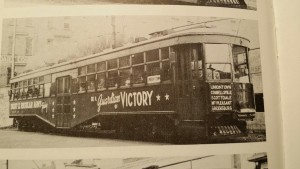
Coal mines were built in remote regions. There were no roads and no railroads. In many instances the forerunners of the road we use today were constructed by mine owners trying to get their product to market. This need also created the railroads in the area as well as the trolley system. The Mount Pleasant, Scottdale & Connellsville Electric Railway Company was chartered Feb 10, 1899 to serve the coal patches of the region. It became the main line of the West Penn Railway running from Greensburg to Uniontown and covering the 37.2 miles in 2 hours and 5 minutes. Passengers would board a single car which was nearly 60 feet long. Trolley service was discontinued in 1952 when many of the mines had closed and the automobile became more prevalent. The rails were abandoned and eventually removed in our area.
Caption: Trolley car on the West Penn Railway servicing communities of Uniontown, Connellsville, Scottdale, Mount Pleasant, Greensburg and places in-between.
BALTIMORE & OHIO RAILROAD
The B&O was first chartered in Baltimore in 1825. It did not come into this region until the 1870s when the coal and coke boom was beginning. In the Connellsville Coke Region it began in 1870 by purchasing the Mount Pleasant & Broadford Railroad. That short track had been leased to the Pittsburgh & Connellsville Railroad in 1872. In turn  the two were leased and absorbed into the B&O as it made its way to the Ohio River. Most of its tracks around southwest Pennsylvania are now owned and operated by CSX.
the two were leased and absorbed into the B&O as it made its way to the Ohio River. Most of its tracks around southwest Pennsylvania are now owned and operated by CSX.
Caption: Route of the Mount Pleasant and Broadford Railroad up the Morgan Valley to Bridgeport and beyond in 1875. It also provides the name of the owner, the number and type of coke ovens, number of workers, weekly production, and where the coke was shipped.
–Franklin Platt. Second Geological Survey of Pennsylvania 1875 Special Report of the Coke Manufacture of the Youghiogheny River Valley in Fayette and Westmoreland County, Harrisburg: Board of Commissioners, 1876, p. 56.
PENNSYLVANIA RAILROAD
Moving west from eastern Pennsylvania the mainline of the Pennsylvania Railroad never reached our area. Instead it constructed its “Texas” branch which entered this region from Scottdale and proceeded to Latrobe and on to Greensburg. It became known as the Southwest Branch, incorporated in 1871. It is not to be confused with the Southwest Pennsylvania Railroad of today which runs on both the B&O and Pennsylvania tracks.
 Caption: Map of McClure & Co holdings in 1886.
Caption: Map of McClure & Co holdings in 1886.
The Youghiogheny River runs north to south along the left edge of the map. The Southwestern Railroad turns east from Connellsville in the lower left of the map and runs northeast to Scottdale where it continues northeast to the McClure mines at Donnelly and Mayfield. One branch bears south to form the West Overton Branch to the mines of Bessemer and Rising Sun, and another branch, the June Bug branch, moves northeast to the Morewood Mine organized by H. C. Frick & Co.
The second railroad, the Mount Pleasant and Broadford, begins at Broadford on the Youghiogheny and moves northeast up the Morgan Valley. It passes the Frick (b1871), Morgan (p1877), Foundry (p1879), White (p1877 and renamed Globe), Eagle (p1880), Tiptop (p1879), and Valley (p1877-8, 1882) mines (all built or purchased by the H. C. Frick Company). It then turns southeast to Scottdale near the Black Hills Mine and along Jacobs Creek into the area of Bridgeport where the Buckeye, Star, Hazlett, and Mullin mines are located. As noted above the mines were purchased and owned by McClure and sold by McClure to Frick in 1895.
The various colors on the map indicate the shape of the mines below ground.
Captions:
- Miner’s Wagon. This wagon was used by miners in the mine. They were paid by the wagon load and were required to pile the coal higher than the sides of the wagon. In the 1880s income was between 20 and 30 cents a wagon load.
- Larry Car. Once the coal was mined it was put into a larry car. That car was on tracks and moved to the top of the coke ovens. Each car was for a single coke oven. The coal was poured into the oven.
- Beehive Coke Oven. Coal was fired in the oven until it was nearly pure carbon. Then it was shipped to various industries. The firing time depended on the ultimate purpose of the coke: for blast furnaces or merchants, etc. The beehive was the first but not the last coke oven. The ByProduce coke oven ended the reign of the beehive and brought about the decline of the Connellsville Coke Region.
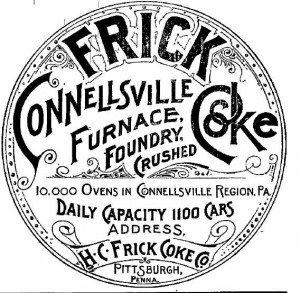
A FAVOR: We are looking for old photographs of the coal mines of the Connellsville Coke Region, especially around Mount Pleasant. Contact us at 724 542 4949 or cassandra.vivian@gmail.com.
OUR THANKS TO:
Mount Pleasant Cultural Trust, Mount Pleasant Borough, Mount Pleasant Glass and Ethnic Festival, Coal & Coke Trail, Republic Services, Harley N. Trice, Braddock Trail Chapter of the DAR, Bureau of Mines, California, PA, offices of Tony Graziani of RGGS, HABS HARE archives at Indiana University of Pennsylvania, Mount Pleasant Library, Pennsylvania State Library, Helen C Frick Archives University of Pittsburgh, Coal & Coke Heritage Center, West Overton Museum, HABS/HAER archives at Indiana University of Pennsylvania, Bill Hare, Bill Biller, Peg Detling, Dale Basinger, Daniel Weinman, Rivers of Steel National Heritage Area, and Pennsylvania Department of Conservation and Natural Resources.
© Cassandra Vivian 2015



